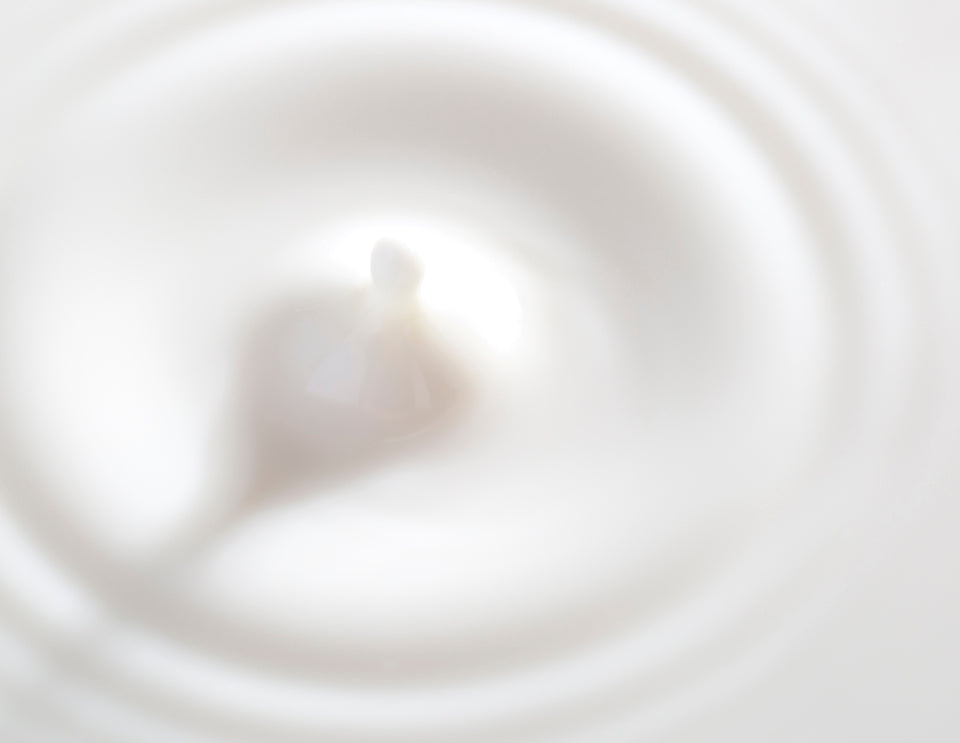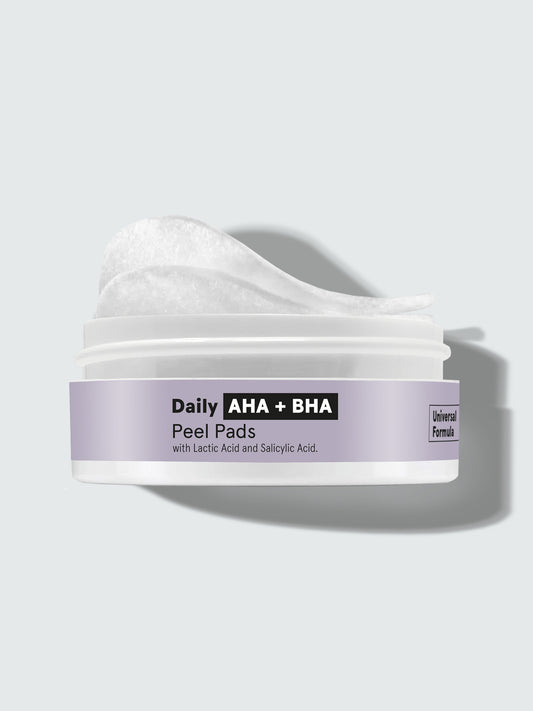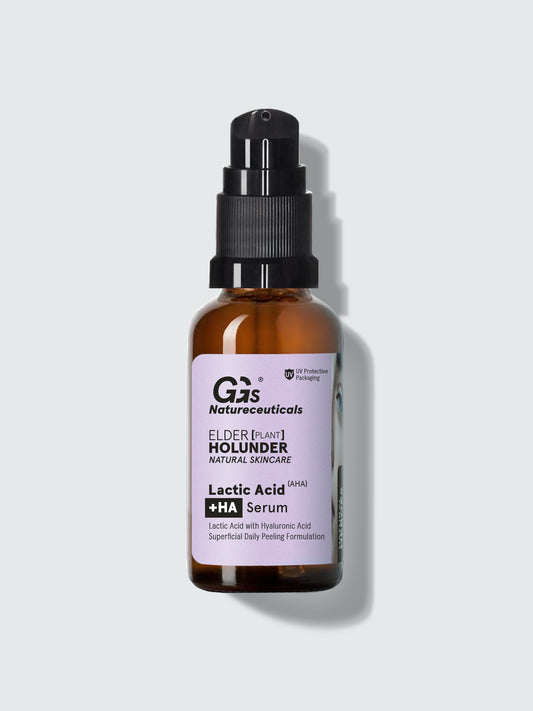| Skin Condition: Normal, dry, or sensitive skin Desired Result: Fresh and even complexion, hydrated skin |
What Does Lactic Acid Do?
Like other chemical peels, lactic acid removes dead skin cells. What's special about lactic acid is its gentle and moisturizing action. Lactic acid also supports the skin's slightly acidic environment and stimulates collagen production. With regular use, lactic acid ensures a radiant complexion with a healthy skin flora. It combats skin impurities as well as signs of sun damage and aging.

The Effects of Lactic Acid on the Skin
Which Skin Type is Suitable for Lactic Acid?
Lactic acid, a part of the skin's natural acid mantle, is a substance naturally found in the skin. Compared to other acids, it penetrates the skin more slowly and thus has a lower potential for irritation. This makes lactic acid one of the milder chemical peels, suitable for almost every skin condition. However, dry and sensitive skin types particularly benefit from it.
For oily or acne-prone skin, combining lactic acid with salicylic acid (BHA) is recommended: This not only removes dead skin cells but also clears the pores of hardened sebum.
Integrating Lactic Acid into Your Skincare Routine
Lactic acid is best applied in the evening, such as in the form of a serum. Apply the lactic acid serum directly to the face, neck, and décolleté after cleansing. Unless otherwise instructed, there is often no need to wait before applying the next product. The peel optimally prepares the skin for subsequent care steps, allowing skincare ingredients to penetrate deeply. After the lactic acid product, a suitable serum and a moisturizing cream should follow.
Irritations are very rare when using lactic acid, and GG's Natureceuticals' lactic acid products are formulated to be gentle on the skin. However, every skin is different, and in rare cases, individual irritations may occur. A slight tingling sensation right after application is possible – this is usually harmless and subsides completely within a few minutes. Peels should not cause burning or redness. If burning, significant redness, or persistent pain occurs, discontinue use until symptoms subside. Then, gradually reintroduce the peel into your routine with a lower dosage and longer intervals.
Although the skin does not become 'used' to certain active ingredients in the traditional sense, it does build tolerance over time – including to lactic acid. To integrate lactic acid gently and tolerably into your routine, it's advisable to use serums or masks with lactic acid only 1-2 times a week for the first 3-4 weeks. After this initial phase, the application can be individually increased to meet skincare needs, such as by increasing concentration or frequency of use.
Important: During the day, conclude your skincare routine with sunscreen (at least SPF 30), as lactic acid makes the skin more sensitive to sunlight.
Lactic Acid – Good to Know
Lactic acid is an alpha-hydroxy acid (AHA) and is therefore part of the chemical exfoliants, often also called fruit acid peels. How chemical exfoliants work and how AHAs differ from BHA? Continue reading here.
The production of lactic acid is mostly derived from plant-based raw materials. In the products of GGs Natureceuticals, vegan lactic acid from sugar beets is used.







